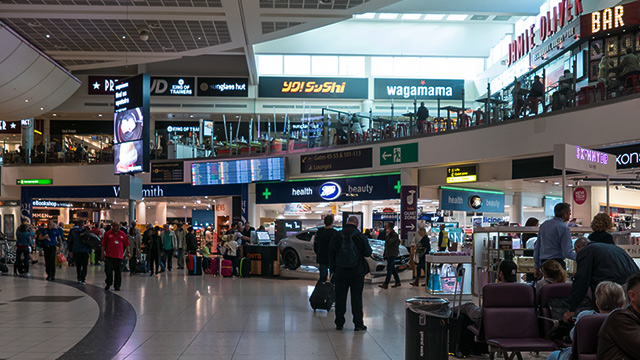
Gatwick Airport, one of the United Kingdom’s premier aviation hubs, stands as a testament to British innovation and connectivity. Situated 29.5 miles south of Central London, this bustling airport has played a pivotal role in shaping the country’s air travel landscape since its inception. With a rich history, innovative facilities, and a commitment to passenger satisfaction, Gatwick Airport continues to soar as a vital gateway to the UK and beyond.
History and Evolution:
Gatwick Airport’s journey traces back to the early 20th century when it served as a racecourse and later transformed into an airfield during World War II. Its commercial aviation venture began in the late 1940s, and it steadily expanded to accommodate the growing demand for air travel. Over the decades, Gatwick evolved into a major international airport, competing with Heathrow for dominance in the London air travel market.
The airport underwent significant expansions and renovations, enhancing its infrastructure and services to cater to the increasing number of passengers. Today, it boasts two terminals, North and South, each equipped with state-of-the-art facilities designed to streamline the travel experience. The addition of amenities such as shops, restaurants, lounges, and hotels has transformed Gatwick into more than just a transit point but a destination in itself.
Connectivity and Accessibility:
Gatwick Airport’s strategic location and robust transportation network ensure seamless connectivity to various destinations within the UK and beyond. The Gatwick Express, a dedicated train service, provides direct links to Central London, allowing passengers to reach the heart of the city in approximately 30 minutes. Additionally, numerous bus services and taxi options offer convenient alternatives for travelers.
Furthermore, Gatwick’s proximity to major roadways facilitates easy access for those arriving by car. Ample parking facilities, including short-stay, long-stay, and premium parking options, cater to diverse traveler needs. The airport’s commitment to accessibility extends beyond transportation, with comprehensive facilities for passengers with reduced mobility, ensuring inclusivity for all travelers.
Innovation and Sustainability:
Gatwick Airport’s dedication to innovation and sustainability underscores its commitment to responsible aviation practices. As one of the first airports in the world to achieve carbon neutrality, Gatwick leads the industry in environmental stewardship. Initiatives such as energy-efficient infrastructure, waste management programs, and sustainable procurement practices reflect its proactive approach to reducing its carbon footprint.
Moreover, Gatwick embraces technological advancements to enhance operational efficiency and passenger experience. From automated check-in kiosks to biometric security screenings, the airport leverages cutting-edge technologies to streamline processes and minimize wait times. Additionally, investments in renewable energy sources and eco-friendly infrastructure underscore Gatwick’s commitment to building a greener future for aviation.
Economic Impact:
Beyond its role as a transportation hub, Gatwick Airport plays a significant role in driving economic growth and prosperity in the UK. As one of the country’s largest employers, it provides thousands of jobs directly and indirectly, supporting livelihoods across various sectors. The airport’s extensive supply chain and business ecosystem further contribute to economic activity, fostering entrepreneurship and innovation in the region.
Gatwick’s influence extends beyond its immediate vicinity, attracting businesses, tourists, and investors to the UK. The airport serves as a gateway for trade and commerce, facilitating the movement of goods and services across borders. Its connectivity to global destinations strengthens the UK’s position as a hub for international trade and investment, driving economic competitiveness and prosperity.
Future Outlook:
Looking ahead, Gatwick Airport remains committed to enhancing its facilities, services, and sustainability efforts to meet the evolving needs of travelers and the aviation industry. Expansion projects, such as the ongoing development of its railway station and terminal upgrades, aim to further improve connectivity and passenger experience. Additionally, investments in renewable energy and technology will continue to drive innovation and environmental sustainability.
As the UK’s second-busiest airport, Gatwick is poised to play a pivotal role in shaping the future of air travel in the region. By prioritizing excellence, efficiency, and sustainability, Gatwick reaffirms its position as a premier aviation hub, connecting the UK to the world and driving economic growth for generations to come.
Conclusion:
Gatwick Airport stands as a beacon of excellence in the UK aviation landscape, embodying a legacy of innovation, connectivity, and sustainability. From its humble beginnings as a wartime airfield to its status as a global transportation hub, Gatwick has continually evolved to meet the needs of travelers and the demands of the modern world. As it charts a course towards the future, Gatwick remains committed to excellence, ensuring that it continues to soar as a vital gateway to the UK and beyond.







